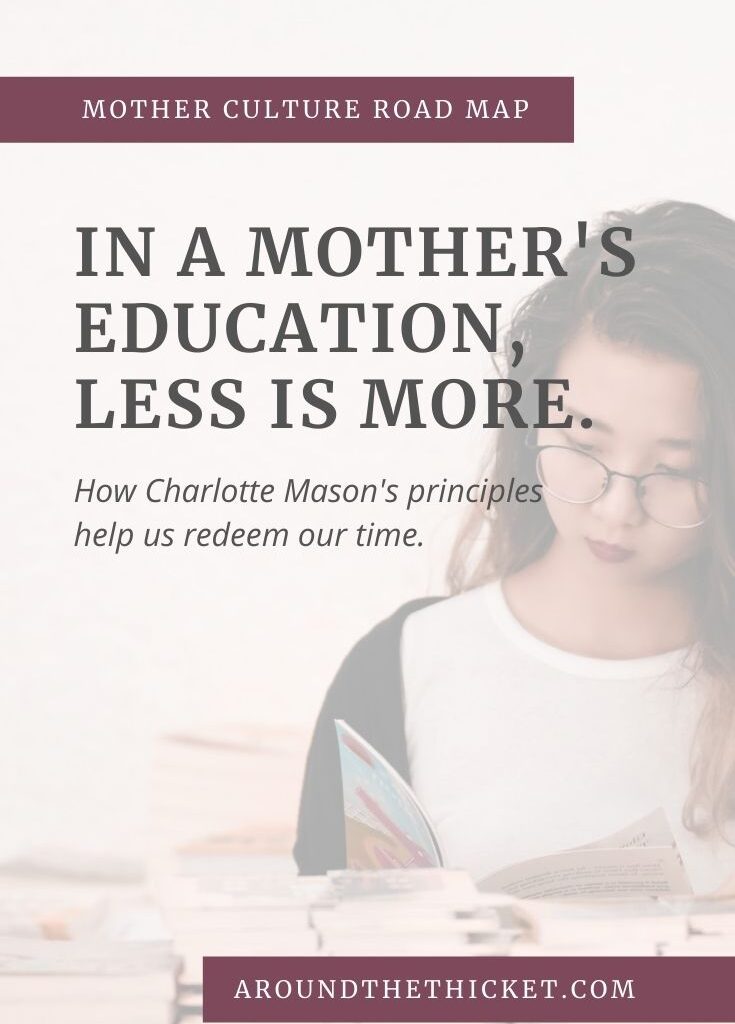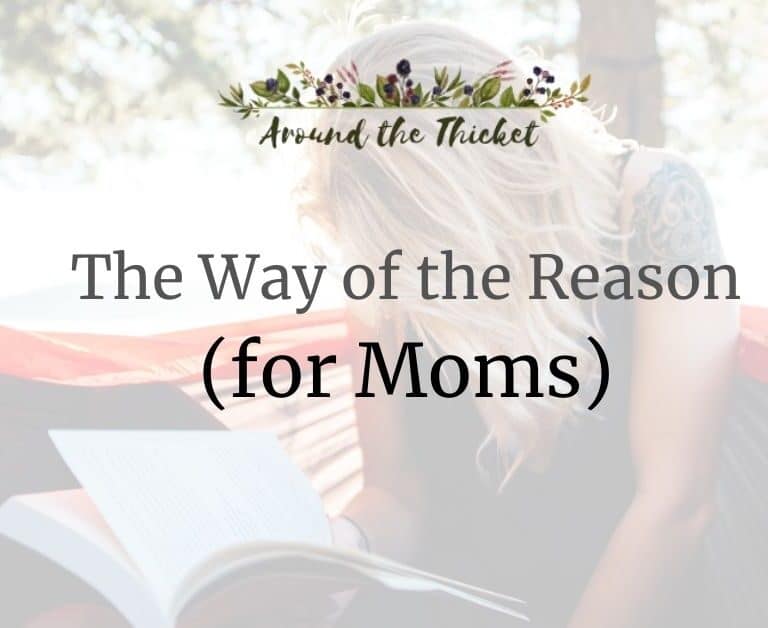In a mother’s education, less is more.
Does reading broadly, from several living books, on a frequent basis, sound overwhelming? Or to put in another way, does the goal of educating yourself seem so distant that you are reluctant to begin?
If we still think of learning as cramming for an exam, answering multiple choice questions, highlighting, and rereading the same chapter multiple times in order to pass a test, we can relax. Many of us still feel we must take in as much information as possible in order to learn. Charlotte Mason, however, turns away from this idea, telling us that when the goal of education is the formation of character, less (done better) is more.
Practically speaking, ‘quality over quantity’ means a few things for a mother’s education.
We don’t need to cram.
How much do you need to read in order to come in touch with a living idea? It will depend on the book you are reading. If a novel, you may need an entire chapter to take in an entire thought. If you are reading Charlotte Mason, you might find a living idea that captures your interest and attention within one page.
Just as with eating, we should stop reading when our minds are full. We can set aside the pressure of hitting a page quota for a day or a book quota for a year, and instead pay attention to when we need to stop and think about what we’ve just read.
I appreciate goals, like reading a certain number of books in a year. But the value is less in achieving the goal, and more in the encouragement it provides to use my time well. Having a slightly ambitious reading target can help me set my priorities, but it is not a measure of how much I am learning and growing from what I am reading.

We read with more attention.
Charlotte Mason would rather us read less but with focused attention than to fly through our books. Let’s face it, though: life is rife with distractions, and not all of them are as easy to turn off as notifications on your phone. My young children legitimately need me, and they deserve me to view them not as a distraction. So how do we read attentively with so much going on?
Returning to the last post in the series, one of the first things we can do is to read with the intention of narrating. Even with interruptions, this attitude does help us pay more attention to what the book is saying, and will help us remember later.
Next, we can look at establishing habits in our home that allow for reading time. One that works for me is to pour a cup of tea before reading, and if my children need something non-urgent, I can tell them that I will help them when my mug is empty. They can check themselves how far along I am by checking my mug, and without interrupting me again. Another option, especially with younger (but non-napping) kids is to use an afternoon rest-time to encourage everyone to read or look at books as a family activity.
None of these approaches are sure-fire, and establishing habits takes time and patience as you gently navigate interruptions. However, these little steps add up to time available for focused reading – even if it isn’t a lot.
Is it ok to reread books?
In Charlotte Mason’s fifteenth principle, she also says that children should read and narrate after a single reading. By this, Charlotte Mason meant that in a formal lesson, a teacher would not read a passage several times before asking the student to narrate. I believe that this is different from reading a book you’ve read before, or even rereading a passage that you find difficult. At the moment I’m reading Waverly by Sir Walter Scott. There are several passages that I find myself rereading, simply because this is a challenging book for me and I sometimes need a second read in order to understand what it says.
So how does this principle apply to moms? If you are reading and narrating (either by writing it down or by telling someone what you read), then there is value in reading once before narration, but I don’t think this is a dogmatic rule. It will help you grow your habit of attention, but if you’ve read something and are confused, there is plenty of space to go back and reread it. Additionally, there is great value in rereading books! Truly living books will present new living ideas each time we read them, so let’s not cut ourselves off from this opportunity.
Education isn’t just for clever people or for moms with loads of time on their hands. In fact, the more I pay attention to other homeschooling moms, the more I see people taking advantage of the small opportunities they have to learn and grow. Little steps add up over the days, weeks, and years and help us continue the course, and lead our children as we do so.
Want to find your feet with the Charlotte Mason Way?

Grab my eight day mini course on the Charlotte Mason Essentials when you subscribe to my newsletter. You’ll get daily emails, a mini podcast series, and a printable workbook with reading assignments and action steps. You’ll be on your Charlotte Mason journey in no time!







